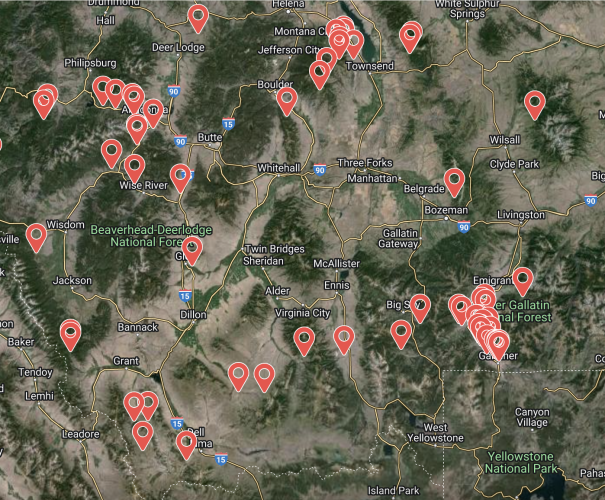Make one that proceeds go to buying land that is turned over to the public
Ducks Unlimited seems to do this fairly well.
Follow along with the video below to see how to install our site as a web app on your home screen.
Note: This feature may not be available in some browsers.
Make one that proceeds go to buying land that is turned over to the public
One state might have no problem with taking the land/wetland permanently. The state of Montana has political leaders that don't like the idea and only do so when forced. It is also a terrible idea given the complaints about the quality of public land hunting. The approach APR uses is a good one.One of my favorite duck spots is an impoundment that DU bought land/gained easements for, improved and turned over to the state. There are a few projects like that in the area.
My understanding is that as an organization, they do a nice job preserving wildlands.
The approach APR uses is a good one.
RMEF does a lot of conservation easements and The Nature Conservancy owns a lot of property. I would guess that neither approach will make Shed God happy.Agreed. I was trying to come up with a good example to hold up to accomplish what @Shed God was asking about.
Your APR is probably a better example than my DU one, although there are concerns about the ability to hunt APR land holdings (some probably legitimate, some certainly not).
Nature Conservancy owns a lot of property.

Like this for example?Too me it is very simple. With all the donations and government shit. Make a non profit that buys montana land. Forget rmef and mule deer foundation. And most organizations that pay out employees. Make one that proceeds go to buying land that is turned over to the public




I also wish you luck in writing everything that is wrong.I know, when a fan boy, you're always a fan boy.
I'm sure he'll take you elk hunting on that top secret red desert spot. Just keep waiting
And among the most profitable businesses in the world because of these subsidies.As if the other energy interests aren't heavily subsidized?

SEN. WHITEHOUSE ON FOSSIL FUEL SUBSIDIES: “WE ARE SUBSIDIZING THE DANGER” | U.S. Senate Committee On The Budget
The Official U.S. Senate Committee On The Budgetwww.budget.senate.gov
Yes, that little flu bug was a small price to pay for this 'huge' reduction in retail gasoline pricesLol lower gas prices
all politicians are wishy washy neither are better then the other they both are on the take for there wealthy donors
Almost nobody believes him, and rightfully so..I don't know why everyone has their panties in a wad. The Republican running for president has denounced Project 2025 many times. He said he doesn't support it and that it was put together by numerous people on the "extreme" Right. So what's the deal here? Spread misinformation? Keep on frothing at the mouth I guess. Don't try pin it on someone that is against it.
In most places the backbone of the grid is 40+ years old.As I pointed out, it worked for California enough that they had to cut net-metering and instead work on installing battery storage to capture the excess electricity.
When it comes to protecting public land, or even saving good private habitat, from large-scale energy development, I don't want to hear why things can't be done. Particularly when a lot of those "obstacles" are self-created.